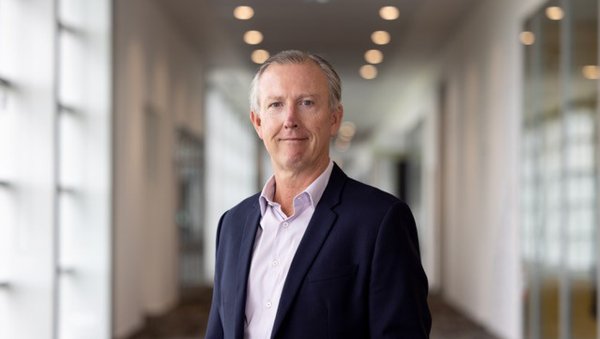Money in the bank: How Scott St John succeeded Sir John Key at ANZ NZ
An out-of-cycle chair change can be disruptive, but ANZ NZ had Scott St John CFInstD in position to take over.

Ricardo Arce on Unsplash
When Sir John Key stepped down as chair of ANZ NZ in March out of cycle – two years earlier than his term was due to finish – the board had been “consciously structured” in a way to deal with such a development.
The former prime minister had been in the role since 2018 and retired saying ANZ was “in a strong position” and had “an outstanding chair” waiting in the wings – that being Scott St John CFInstD, who had joined the board in 2021.
St John says there are varying amounts of notice you get in a transition and this succession was slightly different because it was not timed at the end of a three-year term.
“Out-of-cycle changes can lift the degree of difficulty in planning succession candidates,” he says. “The cover for this scenario is an existing board that has the skills to comfortably cover the ground required while the subsequent search occurs.”
St John says that while there was a sense that something might happen, Key’s departure was not defined until very close to the announcement.
“However, the board was consciously structured in a way that the current suite of independent non-executive directors (INEDs) had the skills and characteristics to continue to fulfil our obligations, even if one were to leave. All of the INEDs are experienced and are chairs, or former chairs of large enterprises, so we had that as a very helpful base.
“As we look forward, perhaps not surprisingly, there will be nuanced changes in the sort of skills and experiences we need around the table. One of the steps was assessing that the board was well structured. We needed to contemplate some minor changes to committee leadership. And we needed to ensure key stakeholders were supportive of the direction of travel,” says St John, who is also a director of ANZ Group.
St John follows in the footsteps of a chair who had the “much-desired skill of being able to get to the heart of an issue quickly”.
“Sir John is relatively unique in the governance world in that in addition to well-honed commercial skills, he brought a lens developed as a politician locally and on the global stage.
“He also had very keen instincts for the wants and needs of the bank’s stakeholders, including our most vulnerable customers. That said, great boards seem to get the best out of the collective skills and characteristics of the group.”

“Out-of-cycle changes can lift the degree of difficulty in planning succession candidates. The cover for this scenario is an existing board that has the skills to comfortably cover the ground required while the subsequent search occurs.”
St John says ANZ has a strong and diverse board that includes deep commercial, financial and social experience. “We work hard to both leverage our strong suits and to work on our improvement areas as a group. The latter will be included in characteristics we look for in the next director we bring onto the board.
“While the board misses Sir John and all he brought, we are comfortable that we are getting on and delivering for our stakeholders.”
St John says the board can rely on “quality practitioners” in times of change and it is structured so a position can remain vacant until the right candidate is identified.
“It is important to consider that quality practitioners often have a number of important governance roles. Our craft does not always deliver predictable or convenient timing. To that end, we may need to consider taking a longer-term lens, potentially being more proactive, and potentially moving earlier than we have in the past.
“Another angle is to be set up so you can be patient in terms of having one seat empty for a little while to get the right outcome. I believe our current structure delivers us that.”
He says ANZ is in the process of further enhancing the way it goes about succession and the process framework wrapped around that.
The Reserve Bank, a key regulator and stakeholder of ANZ, has recently conducted a governance review across the industry and St John says one of the helpful suggestions was looking at the way they document their work in succession planning. “The skills we desire can change over time,” he says.
“From time to time, things come out of nowhere, so to ensure you give the business the best opportunity of dealing with such events, not having significant experience gaps is useful.”
“Within governance, there is always room for improvement – there is no finish line. This includes directors continuing to bring in ideas they have seen work or otherwise at other organisations.”
St John says he has not been at ANZ long enough to have a deep sense of how succession was approached historically. “Looking back, you might say the common characteristics of directors were highly experienced, well-regarded for their judgement, relatively strong financial skills and an excellent ability to draw the best out of their colleagues as a collective group.
“In saying that, the group I serve with has a real diversity of thought. We come from different perspectives. We do include diversity in our succession deliberations. That said, meritocracy is also important. Banks are particularly complicated, highly regulated and the workloads are meaningful and growing.
“While every day is a learning day, I believe bank directors need to be operating at a relatively high level to entertain a seat on a bank board. This does not preclude any group, but it does set a high bar.
“Within governance, there is always room for improvement – there is no finish line. This includes directors continuing to bring in ideas they have seen work or otherwise at other organisations.”
While it is suggested by some that nine years is a sensible rotation cycle, St John says he has a slightly more expansive view.
“You should be making your tenure decisions within a plan. Having regular director rotation makes sense from the perspective of having the right balance of freshness of thought, and continuity of institutional knowledge. Some skills are harder to acquire than others, particularly in a small market like New Zealand.
“In that context it may make sense to somewhat stretch the terms of those directors with harder-to-acquire skills.
“I would also note that a number of CEOs have suggested to me that directors hit their peak at five to six years on a board, inferring that we should have an open mind about tenure while ensuring we are acting in the best interests of the company. Another point to contemplate is chair and CEO tenure and timing.”
St John is also chair of Mercury NZ and will retire as chair of Fisher & Paykel Healthcare in August.